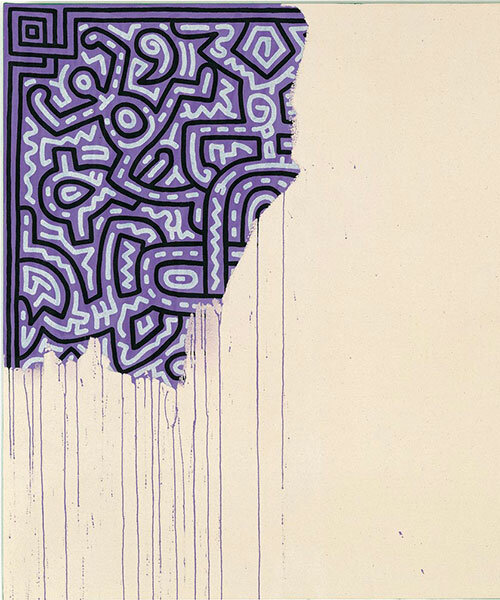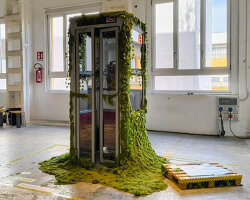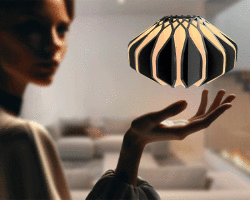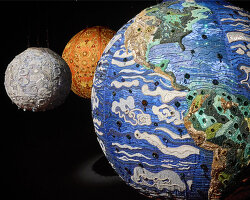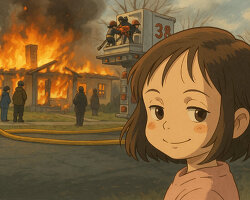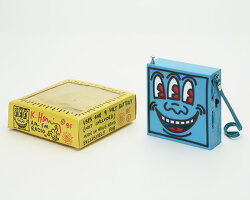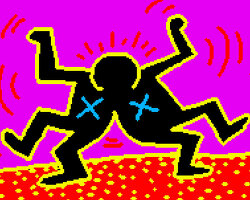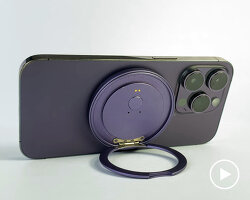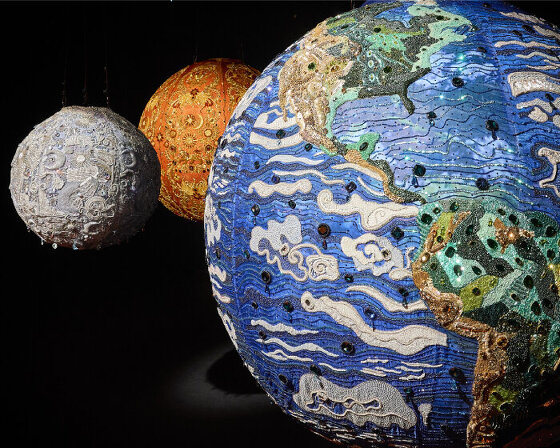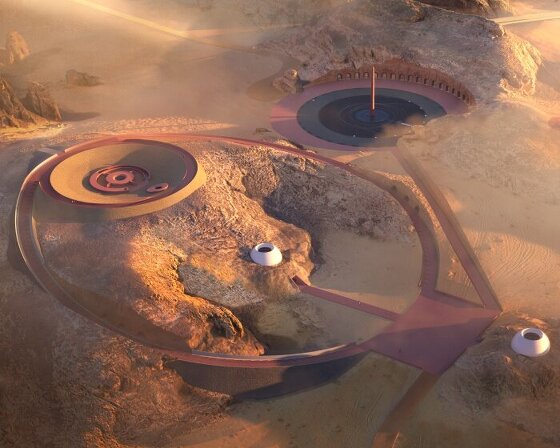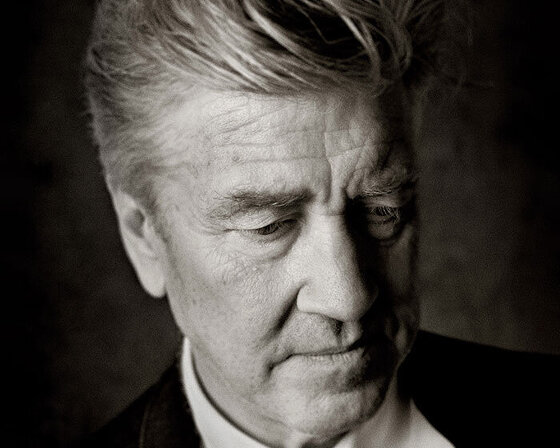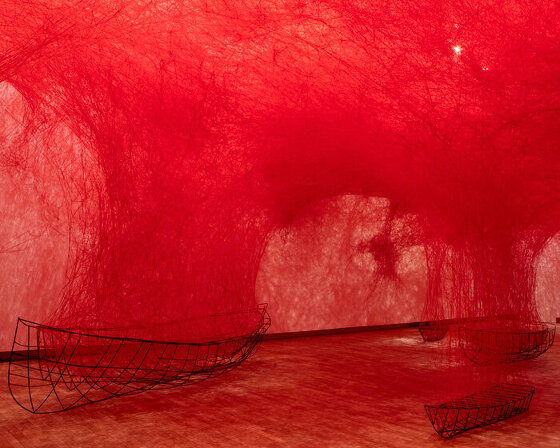artificial intelligence fills in keith haring’s unfinished painting
Controversy erupted online when an X user employed artificial intelligence to ‘complete’ Keith Haring’s Unfinished Painting (1989). The original artwork occupies only the top-left corner, leaving the rest intentionally blank to symbolize the void caused by the HIV epidemic, which claimed Haring’s life. In a recent post, user @DonnelVillager shared an image of the Unfinished Painting, now entirely filled through generative A.I. ‘The story behind this painting is so sad!’ they mentioned. ‘Now using A.I. we can complete what he couldn’t finish!’
This situation unfolds within the broader context of widespread concern surrounding artificial intelligence and copyright issues. On December 31st, 2023, storyboard artist Jon Lam took to X to share a Google spreadsheet, which lists thousands of artists whose styles were allegedly used to assist Midjourney in replicating artworks. The document includes notable names such as David Hockney, Tracey Emin, Yoko Ono, Yayoi Kusama, and Keith Haring himself.
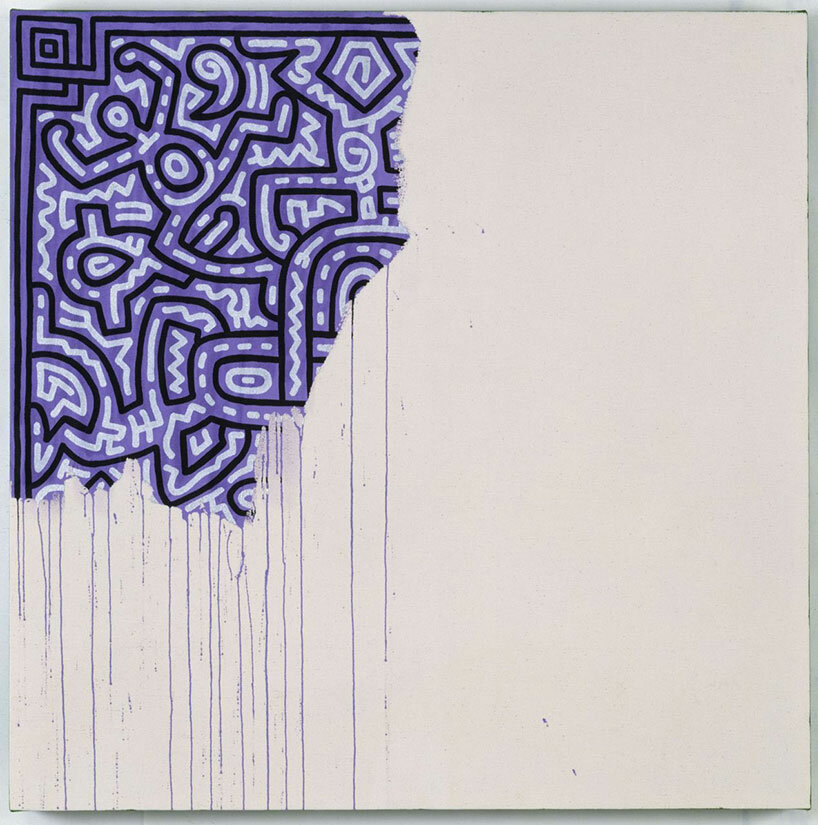
the Unfinished Painting (1989) by Keith Haring | image via @DonnelVillager
viral posts unmask clash between AI, art, and ethical boundaries
As Hyperallergic reports, @DonnelVillager’s X post quickly went viral, sparking immediate and vehement backlash. ‘This is sooooo wrong. The point is it’s unfinished because he died. Using AI to finish it is a travesty, and you should take this post down,’ one commenter wrote, while another one described the act as ‘disgusting, a desecration, an act of sacrilege.’
Numerous commenters also speculate that the post serves as bait – deliberately creating polarizing or anger-inducing content to boost engagement by provoking strong reactions. Whether intentional bait or not, the post fuels the ongoing discourse on artificial intelligence and copyright concerns. The discussion has escalated, particularly following the revelation of 16,000 names of non-consenting artists allegedly scraped by Midjourney, brought to light by Jon Lam. On his post, the artist shared a series of screenshots allegedly showing ‘Midjourney developers discussing laundering, and creating a database of artists (who have been dehumanized to styles) to train Midjourney off of’. One image shows a developer stating ‘all you have to do is just use those scraped datasets and they conveniently forget what you used to train the model. Boom legal problems solved forever’. The post also includes a link to a Google spreadsheet listing the artists’ names alphabetically. This material has been submitted as evidence in lawsuits filed by artists who accuse AI companies of infringing on intellectual property rights.
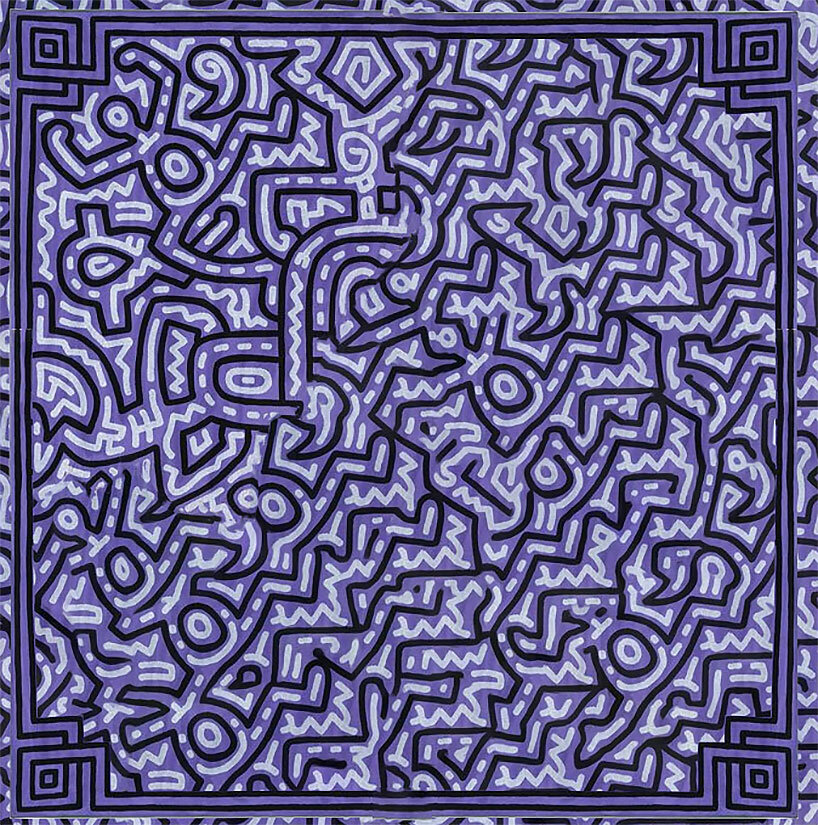
the ‘completed’ AI-generated version of Keith Haring’s work | image via @DonnelVillager
Midjourney developers caught discussing laundering, and creating a database of Artists (who have been dehumanized to styles) to train Midjourney off of. This has been submitted into evidence for the lawsuit. Prompt engineers, your “skills” are not yourshttps://t.co/wAhsNjt5Kz pic.twitter.com/EBvySMQC0P
— Jon Lam #CreateDontScrape (@JonLamArt) December 31, 2023
ai would be impossible without copyrighted material, says openai
According to Artnet, amid these lawsuits, OpenAI, the organization responsible for ChatGPT and the text-to-image generator DALL-E, defended itself by stating that the development of artificial intelligence would be impossible without the incorporation of copyrighted material. In a statement to the U.K.’s House of Lords, the company explained, ‘Because copyright today covers virtually every sort of human expression—including blog posts, photographs, forum posts, scraps of software code, and government documents—it would be impossible to train today’s leading A.I. models without using copyrighted materials. Limiting training data to public domain books and drawings created more than a century ago might yield an interesting experiment, but would not provide A.I. systems that meet the needs of today’s citizens.’

image courtesy of National Portrait Gallery, Smithsonian Institution; gift of the artist in memory of Monique Perlstein
